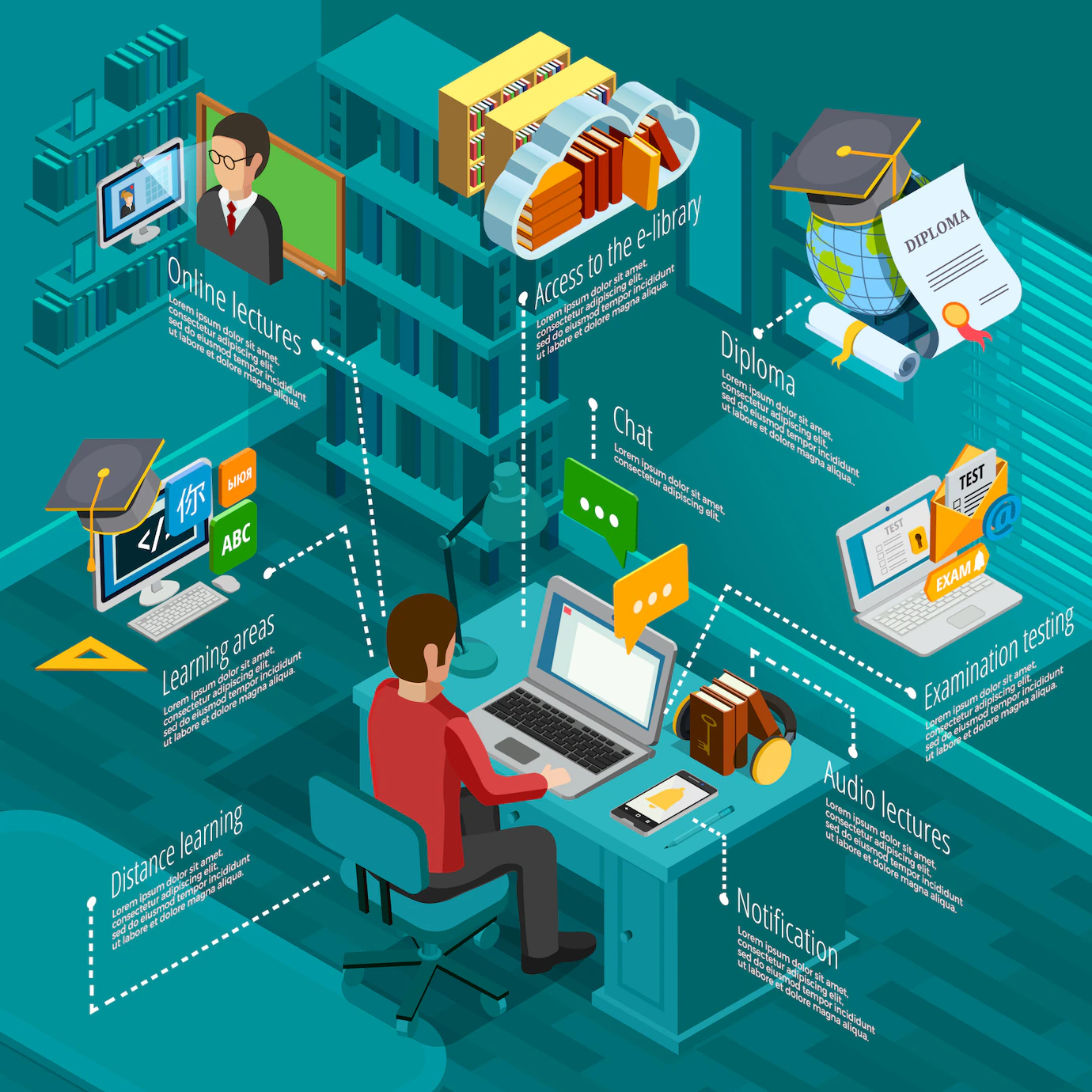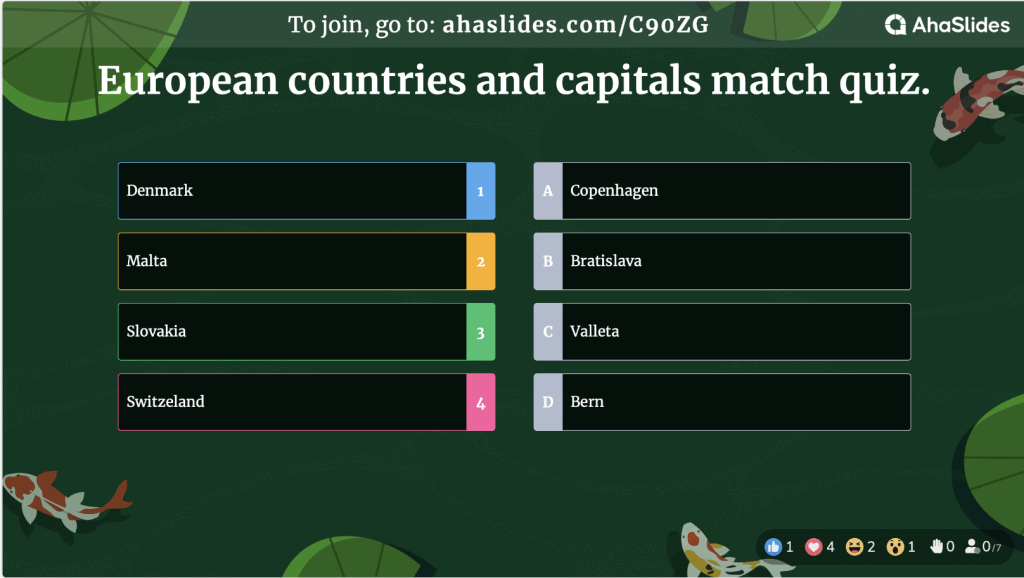What is the E-learning meaning in education and employee training?
The E-learning concept has become popular since the early 2000s with the rise of the internet and advancements in digital technologies. For more than 20 years, E-learning has transformed with numerous variations. The E-learning meaning has expanded from simple electronic learning to virtual learning, and open learning along with the development of a learning management system, and has become a mainstream approach to education and skill training.
Let’s learn more about the meaning of E-learning in the education and training system nowadays and its future trends.

Table of Contents
Tips for Better Engagement
Start in seconds.
Need an innovative way to heat up your online classroom? Get free templates for your next class. Sign up for free and take what you want from AhaSlides!
🚀 Grab Free Account
What is the E-learning meaning?
E-learning meaning, also known as electronic learning, is defined as the use of electronic technologies and digital media to deliver educational content, courses, and training programs. It is a form of education through digital platforms, typically accessed via the Internet.
What are E-learning types?
The E-learning meaning can vary from type to type, and learners learn and absorb knowledge in different forms. There are three main types that indicate E-learning meaning as follows:
Asynchronous E-learning
Asynchronous e-learning refers to self-paced learning where learners can access and engage with course materials, modules, and assessments at their own convenience. In this type of e-learning, learners have flexibility in terms of when and where they learn, allowing them to adapt their learning schedule to their needs.
Asynchronous e-learning meaning focuses on providing recorded lectures, discussion forums, online resources, and assignments that learners can access and complete at their preferred time. This type of e-learning is ideal for individuals who require flexibility in their learning journey, as it accommodates various schedules and allows learners to progress at their own pace.
Related:

Synchronous E-learning
Synchronous e-learning meaning can be understood as the involvement of real-time interaction between learners and instructors, simulating a traditional classroom setting. This type of e-learning requires learners to participate in live lectures, webinars, or virtual classrooms at specific scheduled times. It provides immediate feedback, enables active discussions, and fosters real-time collaboration among learners.
Synchronous e-learning engages learners through interactive activities, group projects, and instant communication channels. It allows for direct interaction with instructors and peers, promoting engagement and a sense of community in the virtual learning environment.
Blended Learning
Blended learning combines elements of both in-person instruction and online learning. It integrates traditional classroom-based teaching with e-learning components. In blended e-learning meaning, learners engage in both face-to-face sessions and online activities, allowing for a flexible and integrated learning experience.
For example, learners might attend in-person lectures or practical sessions while accessing supplementary materials, quizzes, or discussions through an e-learning platform. Blended learning offers the benefits of personal interaction and hands-on experience while leveraging the advantages of e-learning, such as anytime access to resources and opportunities for self-paced learning. This approach can be tailored to meet the specific needs and resources of educational institutions or organizations.
What are examples of E-learning?
E-learning meaning can be different from learners’ intention. Here are the top 5 E-learning examples that increase learning engagement:
Microlearning
Microlearning means the content is delivered in small, bite-sized modules that focus on specific topics or learning objectives. These modules often include short videos, infographics, quizzes, or interactive exercises, enabling learners to acquire knowledge and skills in a concise and targeted manner. You can get free micro-learning programs on online learning platforms like Coursera, Khan Academy, and Udacity.
Quizzes and Gamified e-learning
Quizzes and gamified elements are frequently incorporated into e-learning to enhance engagement, motivation, and knowledge retention. AhaSlides is one of the most famous educational platforms that combine quizzes and games together. You can choose various types of Quizzes forms, such as multiple-choice questions, fill-in-the-blanks, matching exercises, or short-answer questions. By introducing elements such as points, badges, leaderboards, challenges, and levels, AhaSlides also brings more joy and competition among participants and learners, which increases engagement and a sense of achievement.

Open Learning
MOOCs are free or low-cost online courses that are accessible to a large number of learners. These courses are often provided by renowned universities and cover diverse subjects, allowing individuals to gain knowledge and skills without the need for traditional enrollment or prerequisites. The most famous online e-learning MOOC websites include EdX, Udemy, Harvard, Oxford, and more. Though it is not a new concept, it is continually learning trends among the young.
Corporate Training Programs
More and more organizations use e-learning platforms and modules to train their employees. These programs cover a wide range of topics, including compliance training, leadership development, technical skills, and customer service, providing employees with flexible and accessible learning opportunities.
Related:
What is E-learning and its advantages and disadvantages?
E-learning meaning in education is undeniable. Their advantages include flexibility in terms of time and location, personalized learning experiences, access to a wide range of educational content, and the ability to cater to diverse learning styles and preferences. It also has gained popularity due to its convenience, cost-effectiveness, and ability to provide continuous learning opportunities for individuals in various fields and stages of life.
However, some E-learning programs might limit personal interaction and social engagement as it primarily takes place in a virtual environment. Some learners may miss the social aspect and collaborative opportunities that come with traditional classroom settings. In addition, it is hard to receive feedback or support from instructors instantly.
The Future of E-learning
Down the road, the E-learning meaning can absolutely be changed with the emergence of AI and Chatbots. It is worth thinking of AI-powered chatbots that can act as intelligent tutors, providing real-time assistance and guidance to learners. These chatbots can answer questions, provide explanations, and offer additional resources, enhancing learner support and facilitating self-paced learning.
Related:
Frequently Asked Questions
Got a question? We've got answers.
Are e-learning and online learning the same?
Is E-learning better than in-person?
Why is eLearning better than classroom learning?
Which country is highest in e-learning?
Key Takeaways
There is no guarantee that e-learning can maintain the same meaning in the future as the landscape of education and technology is constantly evolving. Innovations in virtual reality, augmented reality, artificial intelligence, and other technologies could shape the future of the e-learning experience differently. Above all, the learner chooses to adapt their learning styles, whether following traditional learning or e-learning. The most important thing is that learners stay motivated and feel comfortable absorbing and putting the knowledge into practice.
Ref: Indiatimes | Fordham





